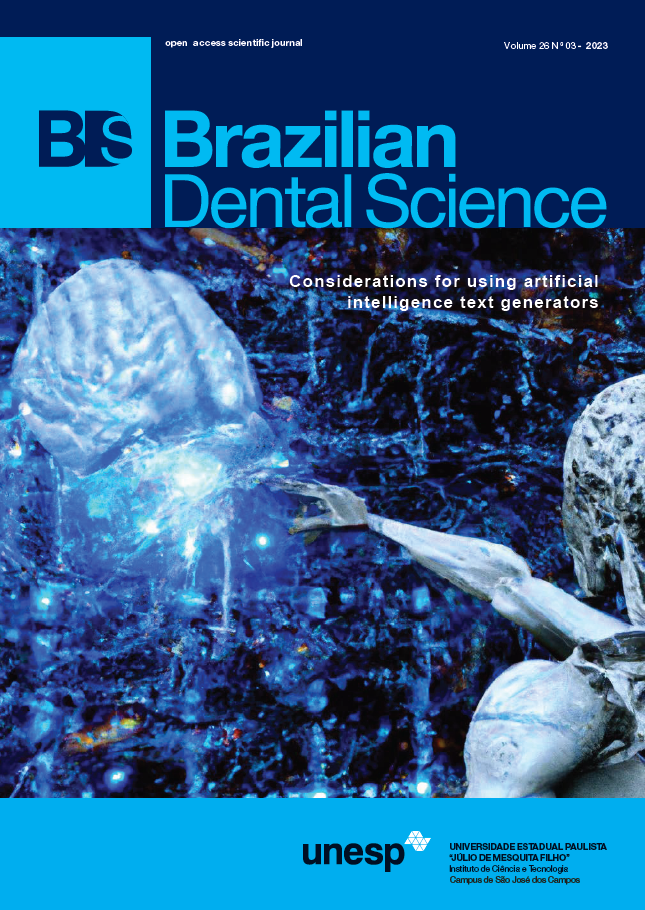Do irrigation solutions used during root canal instrumentation influence the adhesion of glass fiber posts? A systematic review
DOI:
https://doi.org/10.4322/bds.2023.e3856Resumo
Statement of problem: the bond strength between adhesive cement and root dentin can be affected by irrigation protocols. Purpose: therefore, the objective of this systematic review was to answer the following question: Do irrigation solutions used during root canal instrumentation influence the adhesion of glass fiber posts to root dentin? Material and Methods: this study followed the recommendations of PRISMA 2020 for writing. PubMed, Scopus, Web of Science, and LILACS databases were searched for articles published until 26 January, 2022. Grey literature and a manual search were also performed. The inclusion criteria were based on the PICO strategy: permanent human or animal teeth (P), which were irrigated during root canal instrumentation with endodontic substances (I) and compared to irrigation with sodium hypochlorite at various concentrations (C) to analyze the bond strength of glass fiber posts (O). Two authors independently performed data extraction and the risk of bias. Results: eight articles were included. Four articles were classified as having a high risk of bias, where the others as medium risk. Studies have reported conflicting results regarding the influence of irrigating solutions and the different concentrations of sodium hypochlorite on the adhesion of glass fiber posts to root dentin. Conclusion: the heterogeneity between studies did not allow the conclusion of a true estimate regarding this topic, and further well-designed studies are needed to clarify this issue. Register: CRD42020221835.
KEYWORDS
Bond strength; Dentin; Glass fiber post; Root canal irrigants; Shear strength.
Downloads
Downloads
Publicado
Como Citar
Edição
Seção
Licença
TRANSFERÊNCIA DE DIREITOS AUTORAIS E DECLARAÇÃO DE RESPONSABILIDADE
Toda a propriedade de direitos autorais do artigo "____________________________________________________________________" é transferido do autor(es) para a CIÊNCIA ODONTOLÓGICA BRASILEIRA, no caso do trabalho ser publicado. O artigo não foi publicado em outro lugar e não foi submetido simultaneamente para publicação em outra revista.
Vimos por meio deste, atestar que trabalho é original e não apresenta dados manipulados, fraude ou plágio. Fizemos contribuição científica significativa para o estudo e estamos cientes dos dados apresentados e de acordo com a versão final do artigo. Assumimos total responsabilidade pelos aspectos éticos do estudo.
Este texto deve ser impresso e assinado por todos os autores. A versão digitalizada deverá ser apresentada como arquivo suplementar durante o processo de submissão.




























